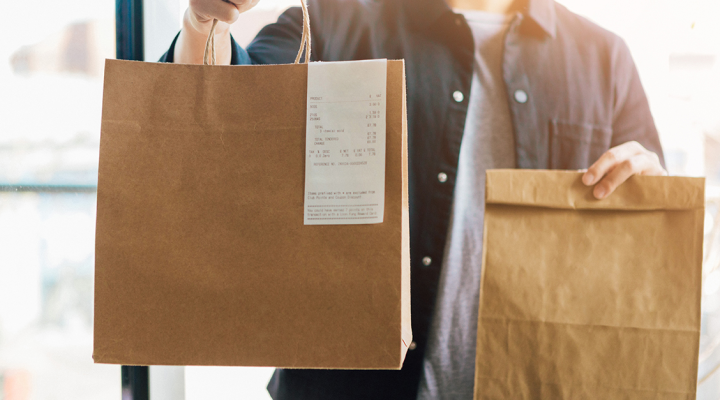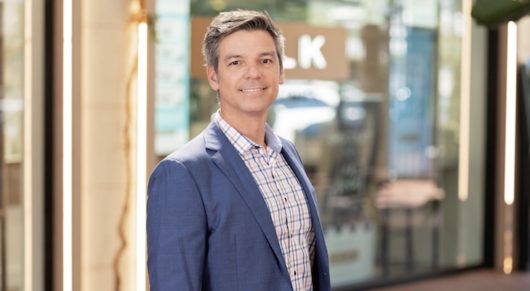CommBank research conducted just before the coronavirus pandemic revealed that most Australians surveyed considered the quality of fast food and take-away retailing to have remained unchanged over the past five years.1
Similarly, in January 2020, just over two in five fast-food retailers surveyed said that they felt neither stronger nor weaker than they did in 20151, a significantly higher proportion than any other retail category2.
With the advent of coronavirus and the first hard lockdown that followed, and the ever-changing government guidelines, the fast food and take-away sector has become more dynamic than ever. And many in the sector are innovating at pace.
Amid the first lockdown, some of Australia’s top restaurants joined existing fast-food businesses in offering take-away and home delivery for the first time. The number of ‘dark kitchens’ increased, marketplaces like Uber Eats introduced contactless delivery, and McDonald’s now sells essential groceries to consumers via drive-thru.
However, adapting to such a fluid operating environment where your basic operations are subject to day-to-day change poses an ongoing challenge. Fast food and take-away retailers are tasked with addressing changing customer expectations online and navigating safety, hygiene and social distancing measures that have reshaped the dining experience.
Ready for anything
Steven Marks, Founder and Global CEO of Guzman y Gomez, says that the business that seeks to “reinvent fast food” remains ready for “whatever coronavirus could throw at it”. Guzman y Gomez has opened seven restaurants during the pandemic, taking the total restaurants in Australia to 124, along with outlets in Singapore, Japan and the United States.
Steven explains that Guzman y Gomez’s ability to adapt quickly to the changing environment is due to his focus on supporting his team and clear communication throughout the process. He says that not only is that a driver of operational innovation, but it has a direct impact on customer service.
“Everyone is integral, and we really care about our team, our franchisees and our guests, and we want them to feel part of a bigger cause,” Steven says. “It has an obvious impact on your people, your sales, and your brand presence.”
“Every single morning, I have 100 of my ‘all essential’ staff on a call. The only way to grow revenues is to have people fall in love with what you do, so everyone plays a role in making sure our crew are supported from marketing and supply chain to operations.
“Businesses that succeed have a clear vision which is communicated to the team. They all know our revenue, profitability, and every day there is a sales target. I am completely transparent, so everyone is on the same page, and we can move quickly.
“For instance, right away, we knew we had to feed people. We charged $11.90 for a burrito, and we dropped our prices to $9.90 in our app. We launched $3 tacos to give value to our customers. It was one thing after another. And we were prepared because the team was committed to our guests and ensuring our revenue remains strong.”
New dimensions to the customer experience
CommBank research undertaken in January 20201 showed that people were less likely to order online for fast food and take-away than in any other retail category. Keeping up with changing consumer behaviours was already one of fast food and take-away retailers’ top challenges, and the onset of coronavirus meant considering new ways to reach customers.
“We are lucky that when the guidelines change, we can shut our dining areas because take-away and delivery is part of our DNA,” Steven says. “Contactless pick-up through drive-thru also just makes sense. We have 36 drive-thrus, and they are exploding.”
However, Steven says that while coronavirus has led to elevated expectations from the fast food and take-away experience, it has mostly emphasised trends already underway.
“Even before the pandemic, I think traditional fast-food retailers took advantage of people’s need for value and convenience. It was basically to offer food as cheaply as possible, and they forgot about people and food quality. But people are more knowledgeable about what they are eating than ever before.”
“For Guzman y Gomez we went the other way. We are obsessed with good, clean food and then we figured out speed. Isn’t it your job as a food company to give people something good for their children? That is especially so for the growing number of people that need value, speed and convenience.”
As dining areas reopened in some locations, safety and hygiene also came under the spotlight as many consumers cautiously returned. But Steven says these issues were always a crucial part of the fast food and take-away sector.
“What coronavirus has done is brought more attention to restaurant cleanliness and hygiene, and that’s a significant part of our business. Our team washes their hands every hour, changes gloves every hour and guests check-in via QR code.”
“But one of the big things I am questioning right now is people talking about how value is important, hygiene is important, restaurant cleanliness is important. When weren’t those things important?”
Steven adds that for Guzman y Gomez, coronavirus has accelerated a vision that was already in place pre-pandemic. Despite the evolving external environment, it has been a focus on people across the business that has allowed him to keep pace. And maintaining the organisational culture remains central to the ongoing growth of the business. “For retailers with weak foundations, coronavirus exposed you,” Steven says. “But if you had strong foundations, you took your business to a different level.”
1 CommBank research undertaken by ACA research in January 2020
2 As part of the CommBank Retail Insights research series, ‘Fast food and take-away is a category that sits alongside Homewares & Hardware, Food & Beverage, Clothing & Footwear, Other Retail and Take-away/Fast Food for the purposes of analysing the findings at a sector level.






